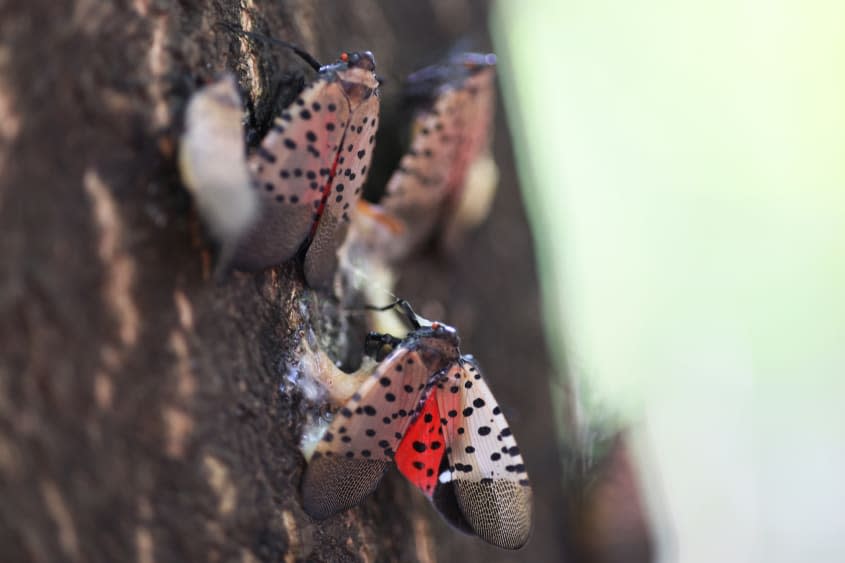Why spotted lanternflies are back and worse than ever

Spotted lanternflies have once again been spotted in swarms across the northeast. Experts advise you to kill them if you see them because the insects are invasive species that harm the ecosystem.
What is the spotted lanternfly?
The spotted lanternfly is an insect native to China that was first spotted in the U.S. in Pennsylvania in 2014, according to the U.S. Department of Agriculture (USDA). The insect feeds "on a wide range of fruit, ornamental and woody trees, with tree-of-heaven being one of the preferred hosts." Through the transport of material infested with the flies or their eggs, the species has spread wide distances across the eastern U.S.
"The expansion of this pest has been fueled by its ability to hitch rides undetected on cargo and passenger vehicles," explained Earth.com. Spotted lanternflies also have no natural predators in this ecosystem because they are not native to the region, allowing them to grow exponentially in population. In 2023, the species has spread to 14 states.
Why are they harmful?
Spotted lanternflies are an invasive species, meaning they are an "introduced, nonnative organism … that has the potential to cause harm to the environment, the economy, or to human health," per the U.S. Geological Survey. While this species, in particular, is not harmful to humans or animals, it is harmful to over 100 plant species, Time reported. "They insert their straw-like beaks into the plant and feed on the sap," Julie Urban, associate professor at Penn State's entomology department, told the source.
The insects cause "serious damage including oozing sap, wilting, leaf curling and dieback in trees, vines, crops and many other types of plants," according to the Pennsylvania Department of Agriculture. In addition, "they excrete a sugary substance, called honeydew, that encourages the growth of black sooty mold." While the black mold doesn't harm humans, it is harmful to plants.
Aside from ecological consequences, the flies also disturb our quality of life. The large presence of the bugs is "aggravating" and "sitting or crawling, they're ready to launch in an instant and they're elusive as well as fast," CBS News reported. This makes it difficult to enjoy time outdoors.
How can you get rid of them?
The Pennsylvania Dept. of Agriculture advises you to "Kill it! Squash it, smash it...just get rid of it," especially now because, "In the fall, these bugs will lay egg masses with 30-50 eggs each." Given the vast numbers, actively eliminating the insects can help slow growth. "We do hope to slow the spread to give us more time to learn about this," Brian Eshenaur, who works with the New York State Integrated Pest Management Program, told Time.
Aside from just squashing them, "you can suck them up into a vacuum cleaner and then just leave them sit for a couple of days and they'll die in there," Penn State lantern fly expert Emelie Swackhammer, told CBS News. However, it's best not to use very intense methods of eliminating the bugs. "There are people who are dumping all sorts of pesticides on these guys and not following proper procedures, or lighting things on fire to try to get rid of them," Anne Johnson, a doctoral researcher at Penn State who studies spotted lanternflies, told Vox. "You don't need to be that extreme. You are probably causing more damage that way."
In reality, "it's a pest we'll learn to live with," explained Eshenaur, adding that complete eradication is likely not possible. "They will keep coming for a little while but it's about a two or three-week period when the adults have this behavior," Swackhammer said. However, doing nothing will cause them to return in bigger numbers next year.
